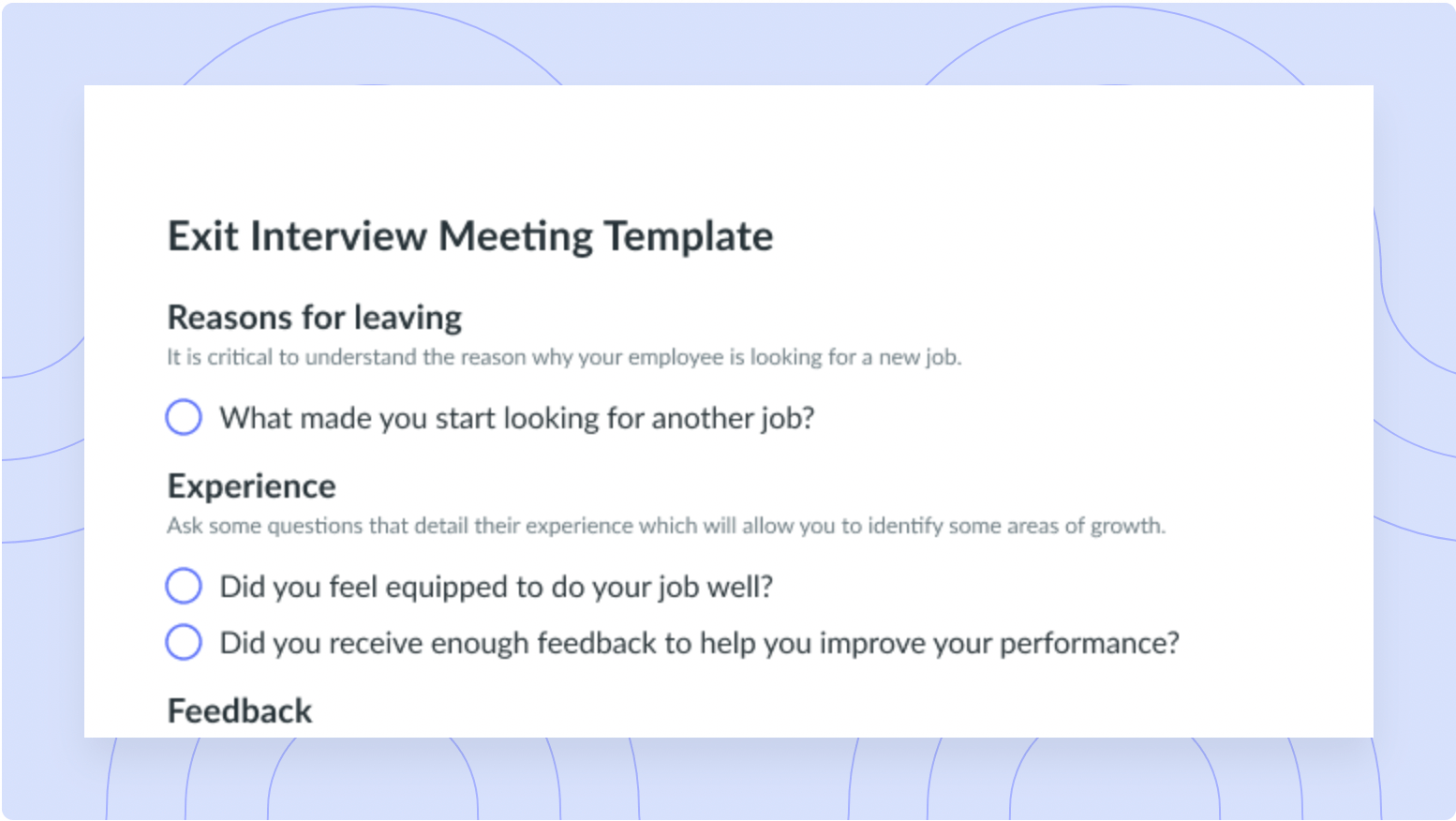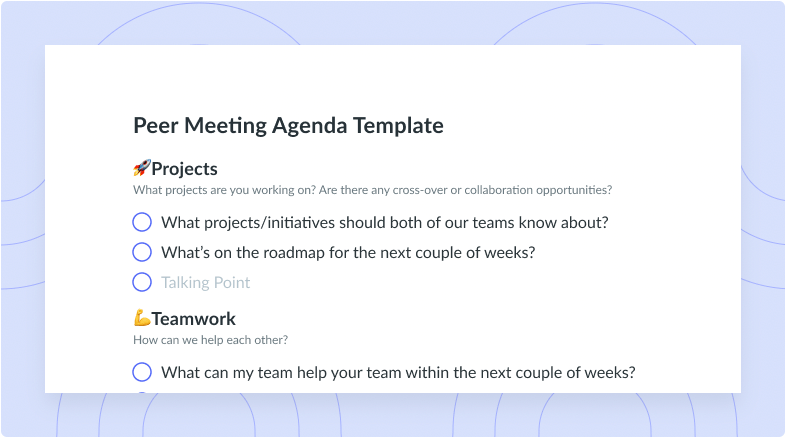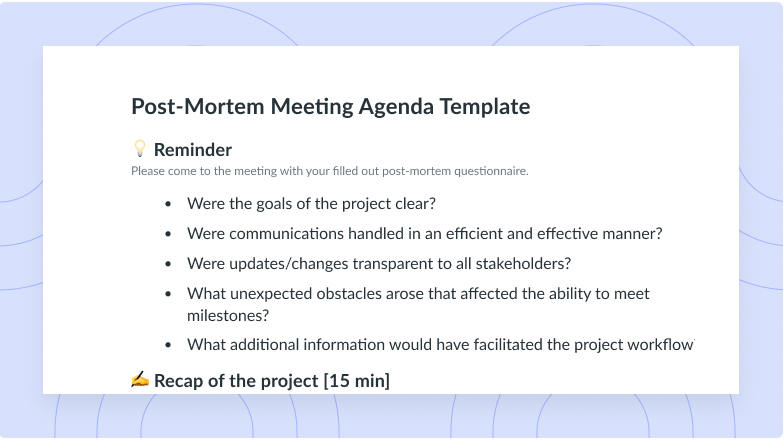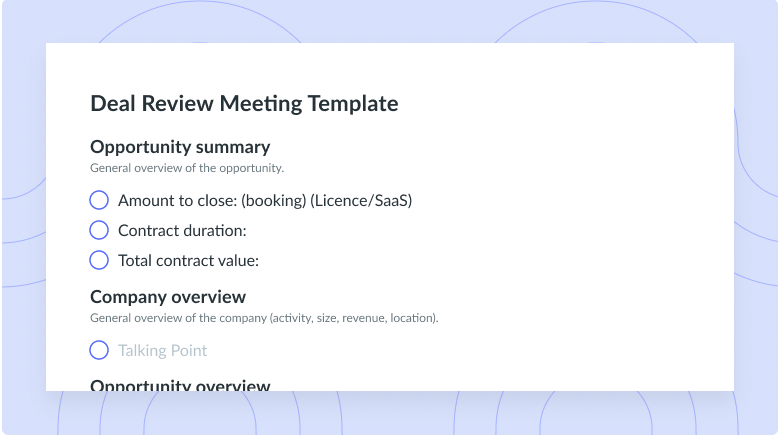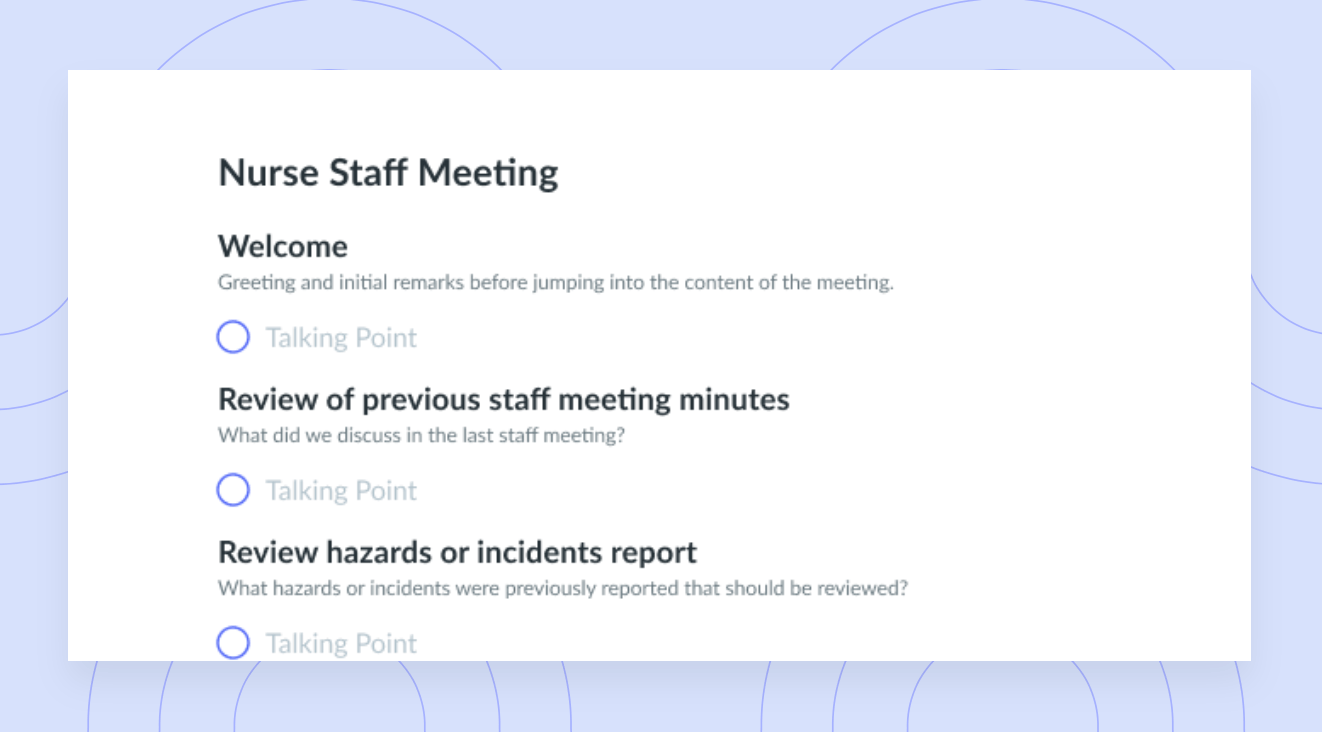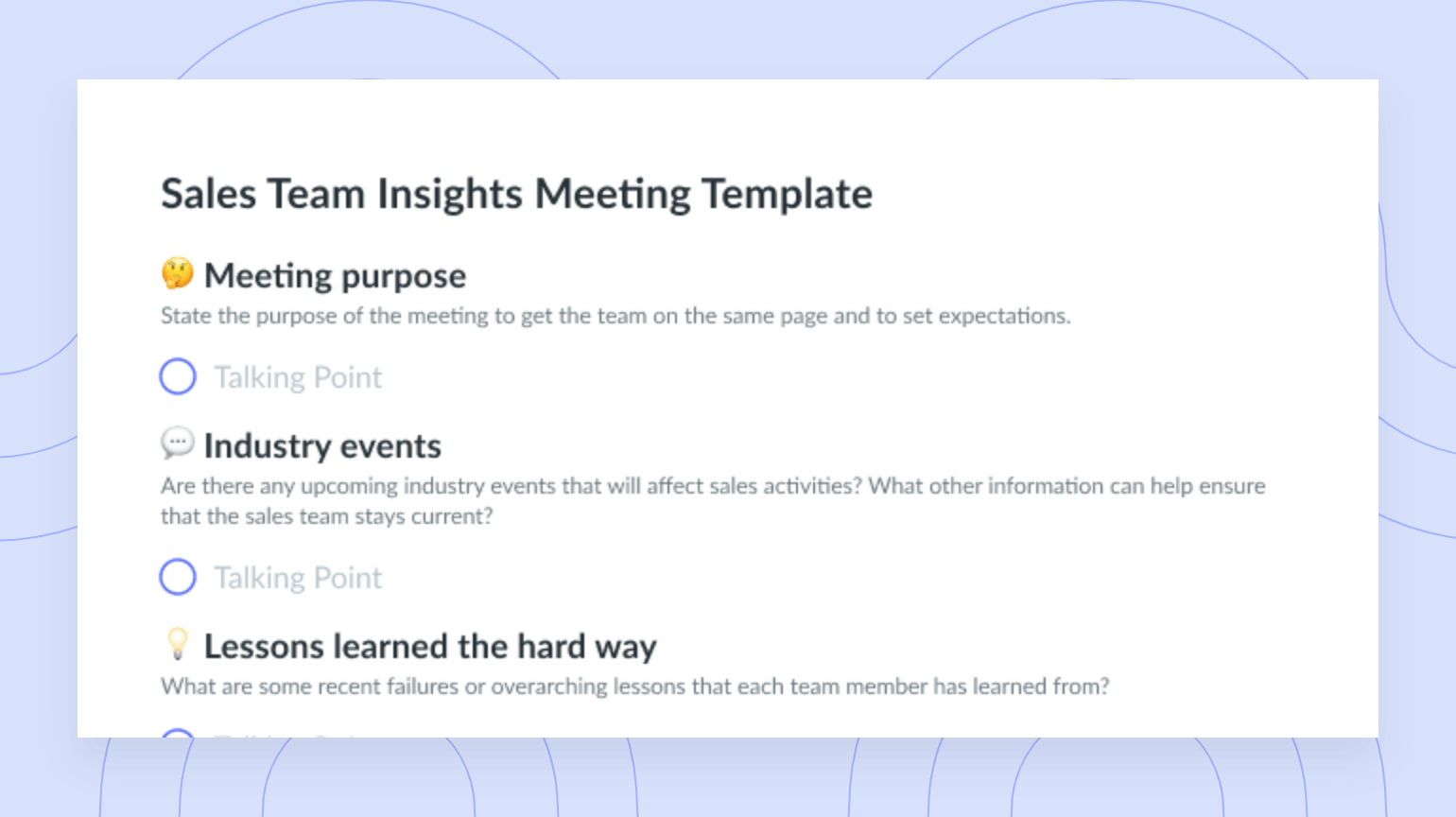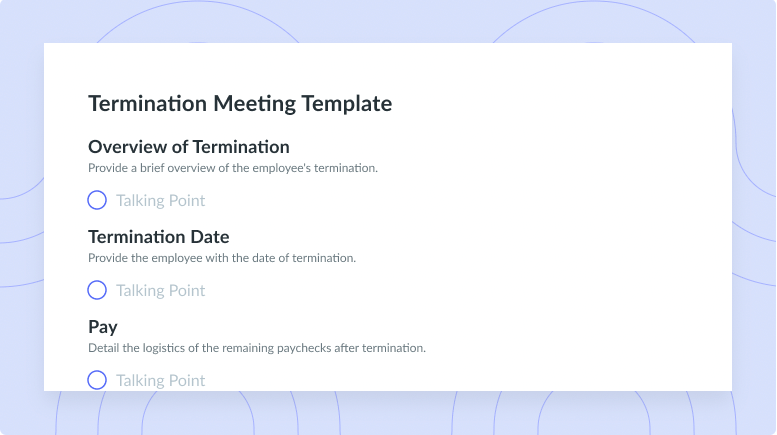How To Run a Skip-Level Meeting (+ Free Templates)
Skip-level meetings allow you to bridge the gap between employees and high-level leadership.
Skip-level discussions are a great resource for executive leaders, as they allow you to get closer to your organization’s day-to-day challenges, questions, and workflows. As an organization leader, you can leverage these calls to encourage team members to ask questions and share feedback about org-wide processes and decisions. You can also use them to understand how your managers are doing and how they are perceived by their teams.
Read on to discover how to run effective skip-level meetings that elevate your company’s people strategy.
8 tips for running a skip-level meeting as a leader
You may be more accustomed to meetings with your direct reports, so connecting with other employees can feel daunting since you’re less familiar with them. Follow these eight tips to ease the learning curve.
1. Know who you’re meeting
Skip-level meetings are casual, but it’s still important to strategically prepare. Before the meeting, read the employee’s company bio and browse their LinkedIn. Armed with this knowledge, you can tailor the agenda to directly address their needs and expertise. You can also use this info to personalize your skip-level meeting invitation.
2. Talk about daily work and life
Remember: This meeting isn’t typically formal. Relax, build rapport, and learn about the other person. Take a moment to express an interest in the employee’s hobbies, weekend plans, or pets.
Add details about them to your Private Notes tab in Fellow for future reference. You might note a mutual interest in skiing you can bring up during future interactions. Employees will appreciate that you’re genuinely listening.
Another Fellow feature you can leverage to stay present is Fellow’s AI Meeting Copilot. This AI meeting assistant captures discussions in Google Meet, Microsoft Teams, and Zoom so attendees can focus on the discussions and review important insights, decisions, and actions after the meeting. Try it free today.

3. Define your goals and structure the meeting
Prepare for your skip-level meetings by setting expectations and using a structured agenda. Choose a few defined topics and send the itinerary to employees beforehand so they can prepare questions to ask.
Fellow’s Ask Copilot feature can analyze past meetings and suggest agendas based on meeting titles, topics, notes, and attendees. This helps you improve your skip-level meeting agenda after each conversation.
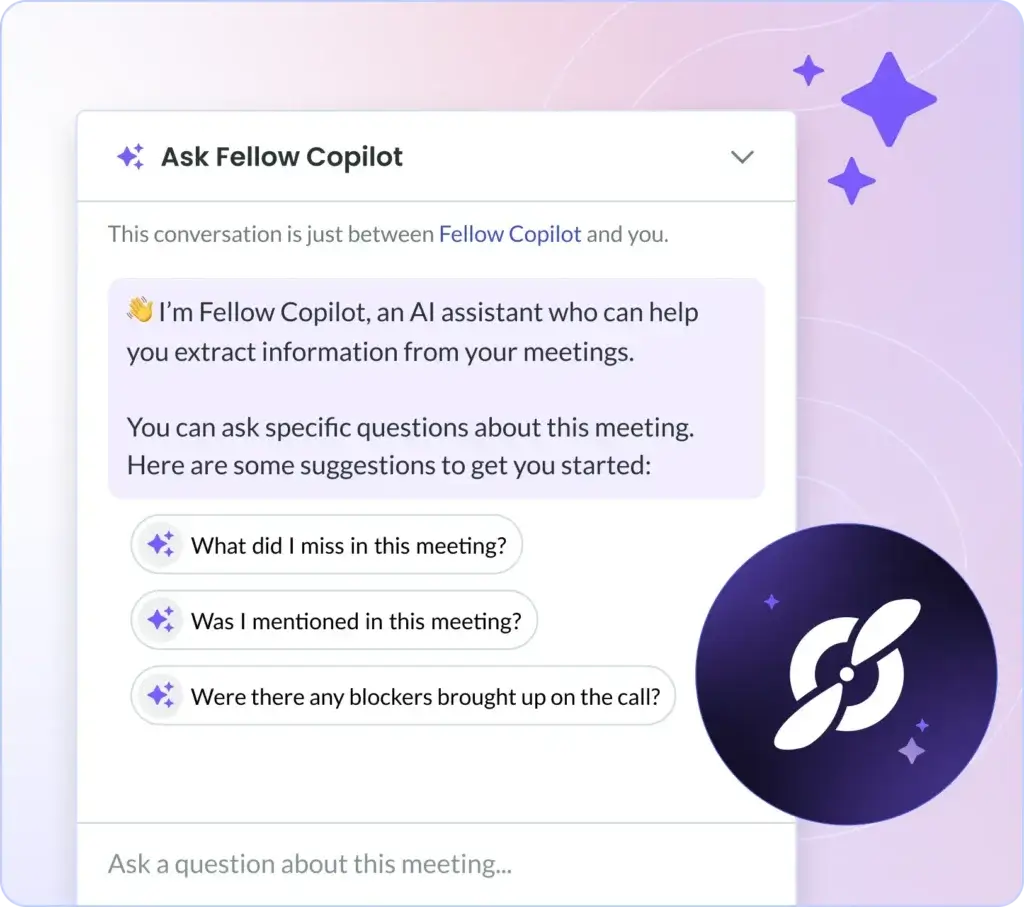
4. Ask what they love about your company
Skip-level meetings are an excellent opportunity to learn why employees want to work for you. Here are a few questions you could ask to gauge their take on the company’s culture:
- What do you like about the company?
- Since you’ve joined us, what’s been your favorite experience?
- Do you have any funny stories about work?
- What’s your favorite part about working with your manager?
- Is there anything else we can do to support you?
5. Ask for improvement areas
Upper management has an entirely different perspective of your company than indirect reports. During a skip-level meeting, discover these workers’ insights into processes and procedures. To learn as much as possible, ask open-ended questions and listen actively.
Employees could suggest improvements (ranging from simple to significant) that you might miss without their input. Examples include consistently using Slack status updates to increase transparency or adding another team member.
For maximum efficacy, implement some of the changes employees suggest. This additional step shows that you value their insights and that they have the power to effect change.
6. Discuss goals and progress
Ask skip-level meeting questions focused on professional development to better understand your team. Indirect reports will enjoy the opportunity to share their goals with high-level management.
Spencer Norman, VP of Engineering at Privy, believes career growth should be the main topic of skip-level meetings:
“I found skip-levels to focus, at least the best ones, to focus more on career goals, career aspirations—kind of longer arc goals and things like that, that the person has.
A lot of times it’s more about things like: ‘Here’s where I’m trying to go with my career. How can you help me get there? Or, do you have any advice?’ And I think that’s a really interesting question to engage in.“
7. Ask about roadblocks and challenges
Be compassionate with your people and ask about their challenges. They could be missing a crucial accommodation, struggling with a new piece of software, or experiencing a communication barrier with a teammate. By addressing this topic directly, you can implement solutions that improve employee happiness and productivity.
8. Ask for and provide feedback
Skip-level one-on-ones are the perfect opportunity to share feedback—in both directions. Give the employee kudos for excellent project work, and ask for feedback to learn how your leadership impacts your workforce. Let them know ahead of time that this is a meeting topic so they can prepare. They’ll also feel less put on the spot this way.
With Fellow’s feedback feature, you can encourage employees to share feedback about projects, performance, and meetings.
Free skip-level meeting templates to try
Here are some handy templates for structuring your skip-levels.
1 Skip-level meeting agenda template
This skip-level meeting agenda is a solid structure for checking in, sharing wins, and collecting feedback. Questions cover employee happiness, team processes, and company strategy.
2 Spencer Norman’s quarterly skip level one-on-one meeting template
Spencer Norman built this effective, minimalist agenda that offers insights into your employee’s career goals and life outside the office. The template also leaves space to customize discussion items.
3 Sales skip-level meeting template
This sales skip-level meeting facilitation template helps you get to know your sales team’s experience with the company and managers. Questions address sales targets and workplace processes.
Take skip-level meetings to the next level with Fellow
Fellow’s AI-powered meeting management platform simplifies planning and hosting skip-level meetings. Use the AI Meeting Copilot for concise and centralized transcripts so everyone’s aligned. And add an AI-optimized agenda to each call to ensure you target the topics that matter most.
Structure your skip-level meetings and build a culture of transparency with Fellow.

FAQs
What is a skip-level meeting?
Skip-level meetings are one-on-one conversations between leaders and indirect reports. These meetings help senior-level managers understand their staff and establish a transparent culture. They also allow employees to ask questions, give feedback, and discuss professional development.
What’s the purpose of a skip-level meeting from an employee’s perspective?
Skip-level meetings help you uncover critical insights and tackle workforce challenges, but they’re just as important for employees. These discussions are an opportunity to:
- Offer new perspectives: Employees share their experiences with business leaders.
- Make an impact: Indirect reports can offer innovative solutions about products, culture, and processes.
- Get feedback: Team members get direct feedback about how their work contributes to high-level goals.
What should I expect during and after a skip-level meeting?
This casual conversation typically covers light topics like hobbies and heavier themes like an employee’s feedback on the company’s management style. After the meeting, review your meeting notes and take action on employee suggestions. See which ideas you can action to show you’re a people-centric leader. And get in touch with the employee’s direct manager to relay important insights.


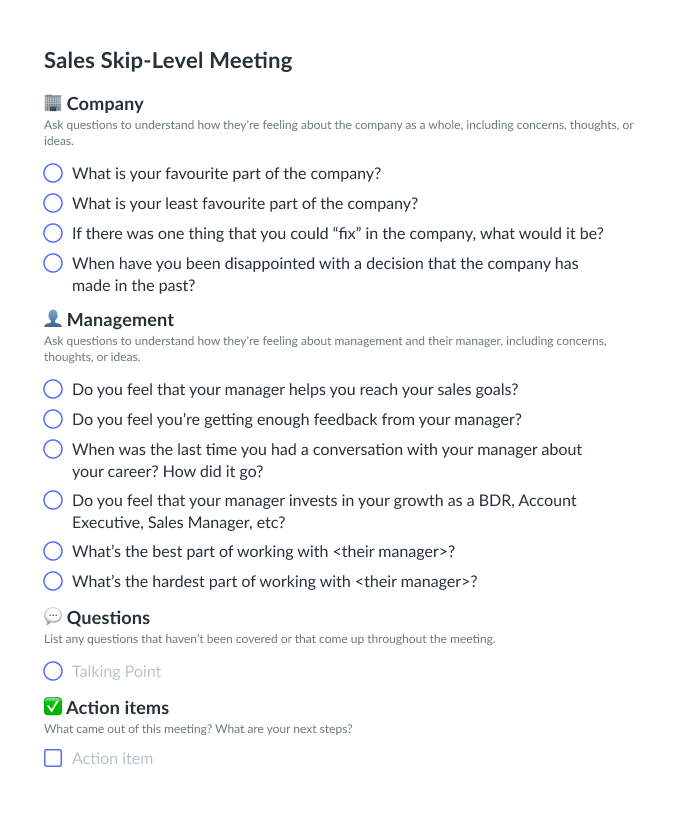




![How to Run an Effective Weekly Team Meeting [Free Agenda Templates]](https://fellow.app/wp-content/uploads/2019/10/Weekly-Team-Meeting-Agenda-Template.jpg)


![8 Types of Company Culture [with Examples]](https://fellow.app/wp-content/uploads/2020/10/Types-Company-Culture.jpg)

